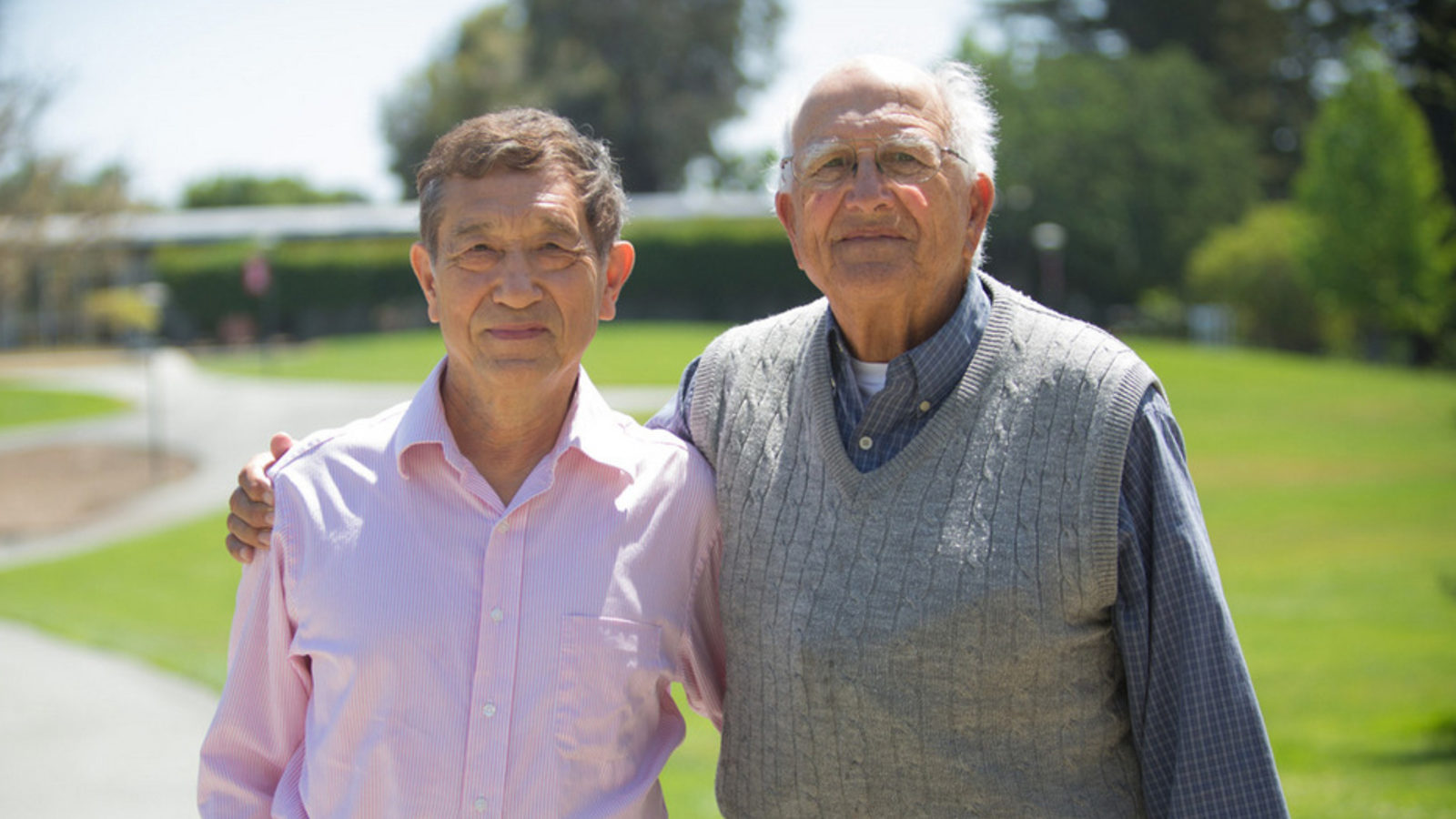After nearly 100 combined years working on accelerators—more than 75 of those years at SLAC—physicists Juwen Wang and Roger Miller know a thing or two about accelerating particles for scientific research.
Now they’ve become experts in accelerating particles to view the hidden contents of cargo containers.
Over the past eight years, Wang and Miller helped Accuray, a Silicon Valley company, design and build X-ray devices that can scan cargo containers for nuclear materials and other hazards.
A version of the cargo-screening system is now in commercial use, and in May 2013 the company received national recognition for its successful development from the federal Small Business Administration.
While Accuray specializes in building accelerator systems for cancer treatment, company officials decided in 2006 to pursue an opportunity to design and build a cargo-scanning system, says Stephen Cheung, the company's principal investigator of cargo security projects. This required an accelerator design that was different from others available in the market.
Wang and Miller were instrumental in finding the right design for the system, Cheung says.
The linear accelerator used in the scanning system is a modified version of the half-century-old, 2-mile-long linear accelerator that is still in use at SLAC, with components that are several times smaller than those of SLAC’s accelerator.
Cheung says, “In this case, we were open to using a different approach and it took scientists like Juwen and Roger to help find the right starting point because their breadth of knowledge is so broad. I can’t say they had to think outside the box because their box was very big. They’ve done more, seen more, and probably analyzed more” accelerator systems and designs than researchers from outside of particle physics.
For this project, Miller worked mostly on conceptual designs for the CAARS system, while Wang says he “got his hands dirty” tuning and assembling the device, among other things.
“It was a great experience working with the Accuray team throughout the project,” Wang says. “I am very happy to hear from the customer that the first linac worked so well.”
Improved performance
One nuance of the design was to use a “traveling wave” rather than a “standing wave” linear accelerator. Standing-wave linacs accelerate protons via an electric field that alternates between positive and negative, while traveling-wave linacs accelerate electrons using klystrons or magnetrons, which produce waves that propel the electrons at gradually increasing energies.
By designing the system to use a traveling wave, Wang says, they were able to achieve “vastly better performance over a wide range of energies.”
This has several benefits, including the ability to generate X-rays of specific and alternating frequencies, energies and intensities. Rapid changes in the intensity of the X-rays provides a quick way to scan cargo, even if it the cargo container is in motion, and limit the radiation dose, Miller says. The rapid pulses also allow the system’s detector to quickly identify the type of materials in the container, and to spot heavy elements such as radioactive materials.
Accuray delivered the first of two systems in late 2008 and they have performed extremely well, Cheung says.
Recognition and deployment
In 2009, Accuray used this same design with new instrumentation when it responded to a related Small Business Innovation Research program solicitation from the US Department of Homeland Security, which called for a next-generation X-ray system for cargo security and specified a new set of technical goals—including the ability to rapidly modulate the X-ray intensity.
Accuray’s system was completed in October 2012 and shortly thereafter was honored with a Tibbetts Award, given by the Small Business Administration to companies successfully undertaking projects funded by SBIR. The program encourages small businesses to do research and development with the potential to produce commercial products.
Cheung says a major company contracted with Accuray midway into the SBIR project to develop a mass-market version of its X-ray system, with many of the capabilities developed under the SBIR program.
“This product is being deployed in the field right now,” he says, adding that the SBIR program placed heavy emphasis on commercialization as a measure of success.
“I think our team has learned a lot” from the knowledge that Wang and Miller brought to the company, Cheung says. “We have grown up a bit by learning from them.”



